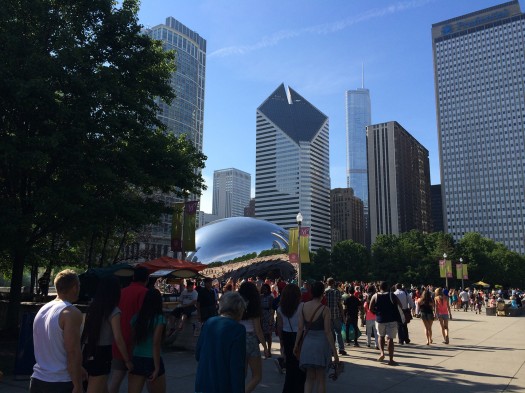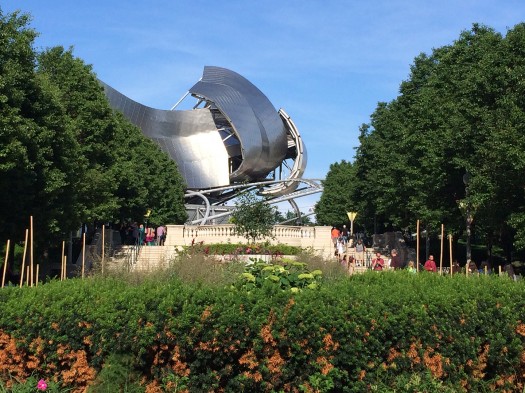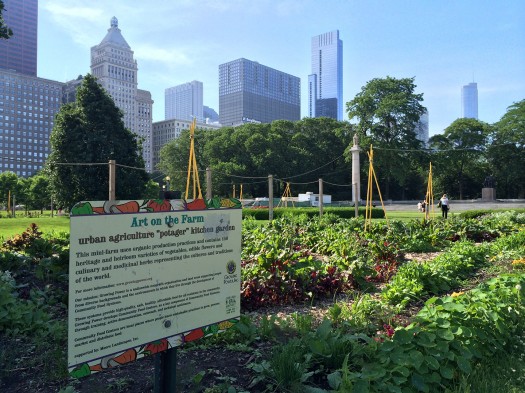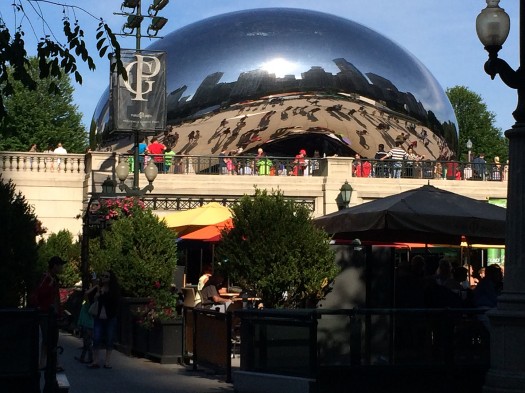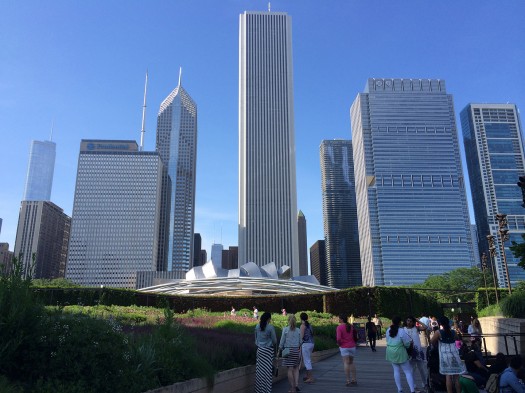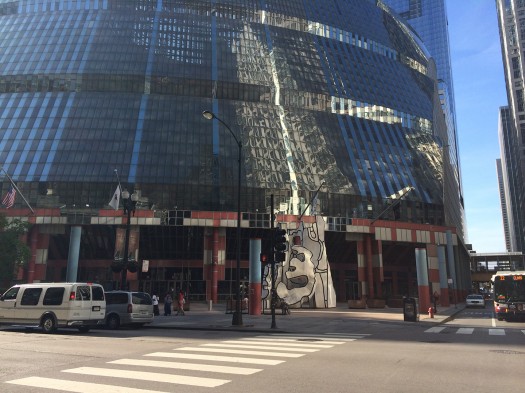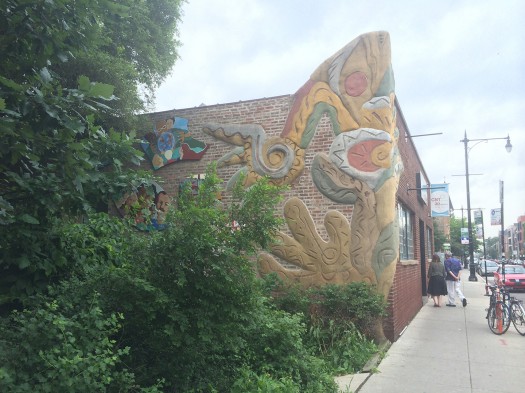A Placemaking Journal
Celebrating Public Art: Chicago in the summer
 A recent trip to Chicago on the first weekend of summer reinforced the importance of great public art. After a particularly harsh winter, the welcoming parks, squares, and plazas of the city were burgeoning with people soaking in the sunshine.
A recent trip to Chicago on the first weekend of summer reinforced the importance of great public art. After a particularly harsh winter, the welcoming parks, squares, and plazas of the city were burgeoning with people soaking in the sunshine.
Coming home to talk with my husband, who happens to be an art museum director, we had some interesting conversations about the differences between civic art and public art. For my husband, there really is no difference, however in my industry, there is.
Andres Duany, Elizabeth Plater-Zyberk, and Robert Alminana’s tome, The New Civic Art, explores at length how to reinject a strong sense of design into city planning. They look carefully at historic and contemporary regional, city, and neighborhood plans, referencing them as the “civic art” of placemaking. The book is a successor to Werner Hegemann and Elbert Peets’ American Vitruvius: Civic Art, the 1922 illustrated volume of civic design that promoted the Garden City and America Beautiful movements.
Other urbanists point to the architectural ornament of the building as something that comes under the umbrella of “civic art.” As well as Frank Gehry, who often treats the entire building as sculpture. Several Canadian cities have banded together to inject civic art policies into city planning departments. However they often confuse the terms public art with civic art.
Exceptionally important is this distinction between urban design as civic art and the public art work. “Public art is art in any media that has been planned and executed with the intention of being staged in the physical public domain, usually outside and accessible to all. Public art is significant within the art world, amongst curators, commissioning bodies and practitioners of public art, to whom it signifies a working practice of site specificity, community involvement and collaboration.
“Public art may include any art which is exhibited in a public space including publicly accessible buildings, but often it is not that simple. Rather, the relationship between the content and audience, what the art is saying and to whom, is just as important if not more important than its physical location,” thanks to Wikipedia. However, the later part of that entry that I disagree with is that architecture can be public art. And in this distinction, trouble can abound.
A few months ago, a good friend of mine and fellow urbanist told me he was going to make everything in his downtown into art – from manhole covers to benches. I’m not sure if my dissuasion worked. While skilled craftsmanship for these sorts of public amenities is something to be acknowledged and valued, we are not talking about the same thing.
Or like the interesting community farm pictured above, I could see no art installed, so why call urban agriculture art? Why not resist using this term where it doesn’t belong? Creative placemaking is a worthy term, well worth the attention it’s been getting lately, and encompasses much beyond the art object.
Public art must be truly accessible by all, and one does not have to go into a museum to see it. It usually requires some sort of public dialogue and process, and is housed in a park, plaza, square, or other public place with public accessibility. Public art changes the dynamics of a space and the interactions between people. Together, public art in a welcoming public space becomes a powerful connector within the city.
Public art is sort of like Lois Weisberg. According to Malcolm Gladwell in Six Degrees of Lois Weisberg, Lois wasn’t just the Chicago Commissioner for Cultural Affairs and founder of a litany of organizations, including the Chicago Cultural Center, Friends of the Park, Gallery 37, Taste of Chicago, Chicago Blues Festival, Chicago Gospel Festival, and Chicago Holiday Sharing It Program.
Lois wisely understood the importance of balancing lakefront and downtown cultural programming with hundreds of neighborhood-based activities, which continue to this day. On the day I was there, not only were there hundreds of thousands of people at the lakefront helping celebrate the World Cup, but hundreds of thousands of people were enjoying dozens of neighborhood festivals.
Lois is a type. She is a connector. She seems to know everyone and introduces people to each other. Lois is the human embodiment of what the city’s public spaces are supposed to be, a connector of people and incubator of ideas. Walking through the plazas and squares, you can almost feel Lois with you.
This hard to define dynamic is largely thanks to “the strength of weak ties.” Some of the most important people in your experience aren’t your closest friends, and the more people you know who aren’t close to you, the stronger your position becomes. Gladwell felt, “Poverty is not deprivation. It is isolation.” And highly-functioning public places thwart isolation with connections and community.
I’m not saying that civic art and public art don’t deliver something similar. They just deliver connections in different ways and are completely different entities. So when urbanists use the term civic art to mean anything from regional, city, and neighborhood plans to the architectural ornament of the building to an entire building as sculpture – while people in the art world usually find the terms civic art and public art more or less synonymous – it’s a potential disconnect. Clearly distinguishing between the terminology will help to fully value public art’s role in placemaking.
However, without the welcoming public space created by the civic art of urban design, a piece of pubic art in an auto centric plaza doesn’t have much ability to connect – nor return its investment – of the same artwork housed in an immersive, human-scaled environment.
Historically, public art functioned primarily as memorial and commemorative monument. Only in the last century has it been liberated from this role. So much so that even war memorials – like the Vietnam Memorial in Washington D.C. – often become an art object as well as a memorial.
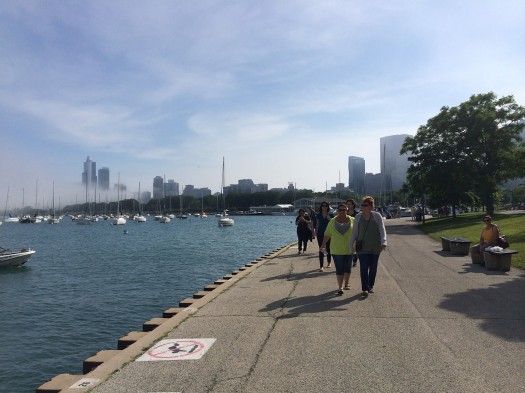
Chicago’s 26 miles of public waterfront provides for walking, cycling, boating, swimming, lingering, investing, collaborating, just to name a few
One of the many reasons that downtown Chicago’s public art is so satisfying is because the City reserved 26 miles of its waterfront as public space, thanks in part to an agreement with the Illinois Central Railroad Company in 1851 in which lakefront tracks were exchanged for a breakwater to protect the harbor. We’ve discussed this same satisfying dynamic in Ottawa along the Rideau Canal, where adjacent lands are generally publicly accessible. Keeping our greatest amenities available to the community makes for resilient economies as well as generally higher levels of social capital.
A parting thanks to my local hosts, the Center for Neighborhood Technology, for the Divvy bike tour and local history lesson. Pictured above is a little art of their own. I’ll leave it to you to decide if it qualifies as public art. Or not.
If PlaceShakers is our soapbox, our Facebook page is where we step down, grab a drink and enjoy a little conversation. Looking for a heads-up on the latest community-building news and perspective from around the web? Click through and “Like” us and we’ll keep you in the loop.


